Backpacking in Colombia
If a country had a dubious reputation in South America in recent years (mind you), it was always Colombia. Drugs, guerrillas, bribery and murder were the attributes associated with the country. But the times in which the drug baron Pablo Escobar had the whole country with his criminal machinations under control are over.
Today Colombia belongs after a complete state reorganization to the safest countries on the continent. And finally you can enjoy the beauty and cultural diversity of the country, which is more unique than any other in the region. In the following we will go into more detail about what you can experience in Colombia and how you can travel cheapest through the country. It will be exciting, that’s for sure.
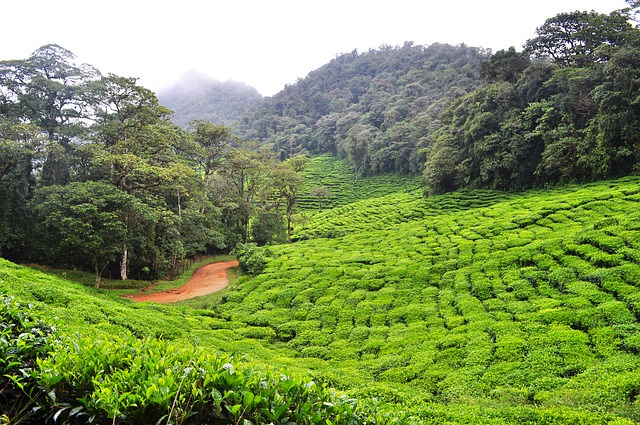
Backpacking in Colombia – Dapa
Colombia – the land of the senses and adventure
Hardly any other country on the globe can boast such a diverse geography and cultural diversity as Colombia. Here you will find everything the adventure heart desires. Colombia, to put it in a nutshell, means: discover, relax, enjoy, learn and fall in love. The latter doesn’t necessarily mean that I should fall in love with the hot-blooded Colombians, although no one can blame you. Who can resist girls who look like Shakira? What’s true for the gentlemen is equally true for the ladies. They, too, will roll their eyes towards the Traumlatinos. Some of the continent’s most sought-after male models come from Colombia.
It is probably the unique mixture of Caribbean, African, indigenous and European roots that has created this special breed of people. But as I said, that is not what it means. On the contrary, you will certainly fall in love with the country. After all, Colombia is twice as big as France. On a journey through the country you’ll get to know the lively port city of Barranquilla, from which Shakira also comes, and you’ll be able to visit the bubbling metropolis of Bogotá with its approx. 8 million inhabitants, lively markets in the centre or the old town.
Wonderful Caribbean beaches await you during a visit to the city of Santa Marta, while in Tayrona National Park you will encounter a multifaceted species life above water, in the crystal clear waters around the archipelago of San Andrés and Providencia, again you can experience the species-rich submarine world while diving or snorkeling. You can discover ancient culture from the pre-Columbian era, for example, in the excavation site along the Rio Magdalena, which is a UNESCO World Heritage Site.
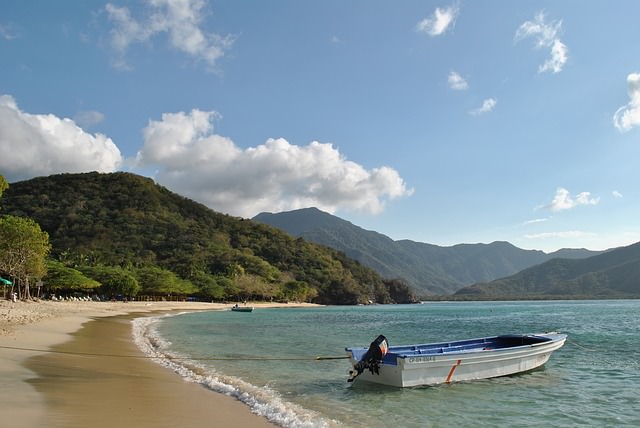
Backpacking in Colombia – Beach
Kolumbien mit einzigartiger Biodiversität
A wealth of species awaits you during your trip to Colombia. This is not least due to the special location of the country, which has its borders on both the Pacific and the Atlantic. If you want to leave the two coastlines, take your time, because the Atlantic coastline is 1626 km long, while the Pacific coastline is about 1448 km long.
And, of course, both are fundamentally different. The Atlantic side is washed by the warm Caribbean waters, while the Pacific coast is dominated by the rather cold ocean currents. Both regions are sparsely populated with the exception of a few port cities. This means pure adventure. Remember that it can rain heavily on the Pacific side. Up to 10,000 mm of precipitation pour from the sky every year. As multifaceted as the land on the coasts is, so diverse is it in the interior.
On the one hand there are the Llanos Orientales, which are a real wet savannah, in which there is no getting through after abundant rain showers, and then there are also the mighty Andes peaks. The partly still active snow-covered volcanoes like the Nevado del Huila or the Galeras are more than 5000 m high. The Pico Cristóbal Colón and the Pico Simón Bolívar bring it to a proud 5775 meters, but both are not volcanoes. In the whole country you can let off steam on all altitude meters from 0 to scarcely 6000 m in 53 protected regions at present.
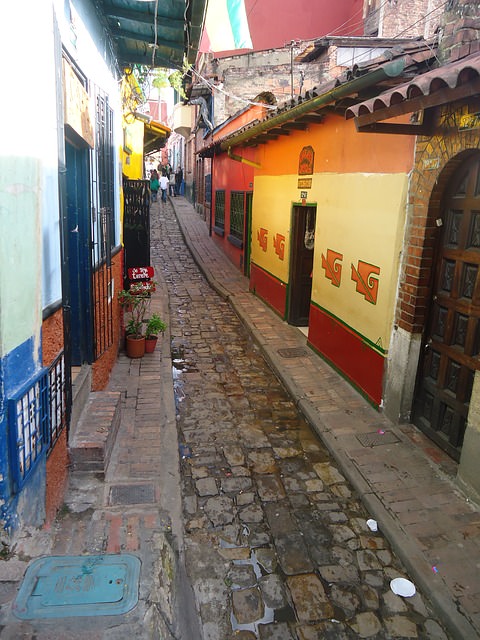
Backpacking in Colombia – Bogota
Cultural diversity in Colombia
Colombia can refer to a variety of indigenous tribes. They are joined by Creoles, Whites, Blacks, Yellows and many more. After all, over 46 million inhabitants live in the country, making it the second most populous country after Brazil. Most of them are now Creoles, with European and African roots. In addition, 86 indigenous people with 64 languages of their own still live on the terrain. The largest tribe with 140 000 individuals are the Wayú, who live on an area of about 1 million hectares in the north of Guajira.
The Arhuaco consist of 14,300 members. And then there are the Sánha, Chimila, Mokaná or Zenú among many others. Many of them have no more than a few thousand members. Nevertheless, the old traditions are cultivated eagerly. Especially in the dances, the food and the handicrafts the different cultures express themselves. Famous are among others the Sombrero vueltiao, which is carried by the population in the plains of Cordoba. A great travel souvenir would also be a real hammock from San Jacinto in Bolivar or the ceramic products of Raquira in Boyaca.
If you are asked to dance, the local songs will be accompanied by the guitar, bandola or tiple. Further south, various flutes and percussion instruments are used. Young Colombians like the popular Cumbia, of which there are many varieties. If you’re lucky and are in the right place at the right time, don’t miss the festivities that are famous far beyond the borders. The best known are:
- Carnival of Negros and Blancos in Pasto – Beginning of the Year
- Feria de Manizales in January
- Carnival de Barranquilla in February
- Festival de la Leyenda Vallenata in Valledupar always end of April
- Festival Folklore in Ibagué in June
- Feria de las Flores in Medellín in August
- Independence festival in Cartagena at the end of the year
- Fiestas del San Pedro y Festival del Bunde Tolimense – Espinal
- Festival de la Cumbia – El Banco – Magdalena with lots of live music
- Summer party – Bogotá with lots of live music
- Festival de Cometas – Dragon Festival
- Festival de la Bahía – Bahía Solano – cool beach party
- Festival Folklore del Litoral Pacifico – Buenaventura with local folk music and a lot of tradition
- Green Moon Festival – San Andrés Islas Beach Party – Rock around the clock
Backpacker Route in Colombia
Backpacker destinations in Colombia is still not the biggest hit on the South American travel market. But the country has all the prerequisites to become one day. Colombia is so fascinating because of its geographical and cultural diversity that, according to surveys among travelers, most people like to come back again. Colombia has so many sights that it is impossible to leave in a short time.
You should take your time or simply come back again. Explore the high Andes or beat your way through the bushes of the Amazon. You can swim in crystal clear Caribbean waters or surf the Pacific side. Dance with the locals in the carnival strongholds around Santa Marta or Barranquilla or get to know the local flora and fauna in one of the country’s numerous national parks. Those who speak Spanish have clear advantages when travelling through the country. But you don’t necessarily need a lot of money if you want to travel to Colombia. What must you have seen when you only stay two to three weeks in Colombia?
Colombia – main backpacker destinations 14 – 21 days
- 1 day sightseeing of Bogotá with visit of the colonial old town and Plaza de Bolívar
- 2 days Cartagena with excursion to the Islas del Rosario – bathing and snorkeling is announced.
- 2 days in San Agustin, coffee zone and Tatacoa desert.
- 1 day Parque Arqueológico Alto de los Idolos plus side trip to the waterfall “Salto de Mortiño”.
- 2 days Cali
- 2 days Barranquilla
- 2 days Boyacá in Amazonas
- 1 day Medellin
- 2 days Providencia and Santa Catalina
Long-term trip through Colombia
- 1 day Santa Marta
- 1 day trekking Ciudad Perdida
- 1 day San Agustin, coffee zone and Tatacoa Desert
- 2-3 days dream beaches in Tayrona National Park
- 1 day Cartagena with colonial old town
- 1 day Zipaquirá with a visit to the Salt Cathedral
- 1 day Dominican monastery Ecce Homo from the 17th century.
- 1 day Puente de Boyacá, one of the most important national monuments of Colombia.
- 1 day Parque Arqueológico Alto de los Idolos plus excursion to the waterfall “Salto de Mortiño”.
- 1 day fishing with fishermen at the Rio Magdalena
- 1 day Salsa dancing in Cali
- 2-3 days adventure at the Río Magdalena Tales to San Agustin
- 2-3 days excursion to the Guambiano Indians in Silvia
- 2-3 days Bogota
- 2-3 days Pacific Beach Nuqui at the Pacific Ocean
- 2-3 days Providencia and Santa Catalina
- 2-3 days coffee picking in the coffee zone
- 2-3 days Medellin
- 2-3 days Cali and Valle del Cauca
- 2-3 days Huila
- one week island San Andrés
Travel Times in Colombia
The climate in Colombia is also multifaceted due to its geographical diversity. There is a difference whether you stand on a 6000 m high mountain in the Andes or in the always warm Caribbean regions on the beach in the sun aalt. Nevertheless, further down in the lowlands it is actually always quite warm. However, it rains differently strongly.
Depending on the region there is a dry and a rainy season. As so often it depends on the point of view, here in the literal sense, how the climate conditions are in the respective region. In the Caribbean around Barranquilla and Cartagena, tropical temperatures prevail. In the mountains of Medellin there is a pleasant Mediterranean highland climate. In the capital Bogotá it is relatively cool. The savannah on the Pacific side does the right pouring. World records are often set here.
Backpacker Budget in Colombia
Travel expenses are an interesting topic. Colombia is not the cheapest country in Latin America, but by far not the most expensive either. If you compare something and plan ahead, you can also save a lot of money. We get to the bottom of the matter and take a look at the costs that could be incurred.
First of all you should know that the minimum wage in Colombia is 550,000 pesos, about 300 dollars. For backpackers this means of course a real Eldorado, because for about 3.500 Pesos – about 1.75 USD there is already something good to eat. Who wants to dine First Class, puts down up to 50 dollars.
Prices in Colombia
Depending on your budget, you can easily spend between 1,500 pesos 0.6 euros in the pub or 14,000 pesos – 5-6 euros in the disco for the same brand of beer. In the hottest nightclubs of Bogotá, Medellín and Cartagena, between 10,000 and 20,000 pesos (4 to 8 euros) in the country alone is half the price.
- Food in a cheap restaurant 3-4 Euro
- Combo Meal in McDonalds or comparable 5 Euro
- Local beer 0,5 0,6 Euro
- Import beer (0.33) 2 Euro
- Cappuccino 1,3 Euro
- Coke/Pepsi (0.33) 0.5 Euro
- Water (0.33) 0,2 Euro
- Bottle Rum in the shop 5 Euro
- Fruits, vegetables staple food in a week 20 -40 euros – it also goes cheaper
- Bread 1,2 Euro
- Cup of coffee 0,2 to 1 Euro
- Bus trip city 0,6 Euro
If you want to take the bus across the country, look at the websites Rápido Ochoa, Expreso Brasilia, Empresa Arauca and some others for the prices.
The prices are approximately for a route from Barranquilla to Cartagena which is about a distance of 130 kilometers and takes about 3 hours about 3 euros.
- Barranquilla to Santa Marta: 2 hours, 3 euros
- Bogota to Medellín: 8-9 hours 20 Euro
- Bogota to Barranquilla: 20 hours 53 Euro
- Bogotá to Cali: 10 hours 25 Euro
- Medellín to Barranquilla: 12 hours 35 Euro
- Medellín to Cali: 7 hours 15 Euro
Domestic flights in Colombia
As in almost all of Latin America, domestic flights are quite expensive due to low demand. There is nothing for 20 dollars, but perhaps the prices sink in the course of time because of the newly founded Viva Colombia, which is also part of Ryan Air. Calculates between 200.000 and 300.000 Pesos (80 to 120 Euro) for a flight from Bogotá to Cartagena.
A flight from Bogotá to the Isla de San Andrés is not cheap. You’ll have to dig deep into your pockets. In a good season you can come there and back for 200 Euro. There is a good website where you can book domestic flights in Colombia at reasonable prices. Have a look at undertrail.com or LAN, Aviancia or Copa on the airline websites. There you can make good deals on the daily offers.
Backpacker Accommodation in Colombia
The subject of accommodation in Colombia is multi-faceted, as all kinds of accommodation are available to you in the country. You can stay for 200 dollars a night in a business hotel or you can go to bed in a cheap hotel for 10 euros. Good middle class hotels cost around 30 to 40 dollars. Otherwise, it is also worth researching apartments in Colombia. If you can rent a good two-room apartment for 30 – 50 dollars with all comforts per day, then this is a good alternative to a hotel.
Backpackers will get by with a budget of 8 -10 Euros per night. However, there are also differences. For example, if you want to visit the San Andres Islands, which are located in the middle of the Caribbean, you should plan a bit more for an overnight stay in a dorm. Usually, however, the costs for a bed in Colombia are affordable. On the homepage of Hostelworld there is a good overview about the average prices in hostels across the country.
- Cartagena 12 Euro
- Bogota 10 Euro
- Medellin 10-11 Euro
- Santa Marta 12 -13 Euro
- Cali 10 Euro
- Taganga 12 Euro
- Salento 8 Euro
- San Andres Island 17 Euro
- San Gil 8 Euro
- Bogota 7 Euro
- Villa de Leyva 13 Euro
Camping in Colombia
Camping is not unknown in Colombia at all. Especially in some national parks you can camp cheaply. Usually in the entry from 5 to 10 euros also the place is in it. In Colombia the “rich” foreigners always pay something on the entry into a park.
Backpacker Trips, Tips & Highlights in Colombia
Some of the best destinations have already been mentioned above. Among them are the big place and the festivities. Those who prefer nature should go to the archipelago of San Andrés, Providencia and Santa Catalina in the Atlantic Ocean. Above all the diving enthusiasts get their money’s worth there. You will discover a lot of folklore and tourism in the city of Santa Marta, founded in the early 16th century. Authentic Caribbean flair awaits you.
Who has enough of the cities and wants to discover very special attractions in Colombia, can go to the Laguna de Guatavita, where already old handicrafts made of pure gold were found. The surroundings at an altitude of more than 3000 meters in the mountainous region of Cundinamarca are also very impressive. Here the Spanish conquistadors looked for the real Eldorado.
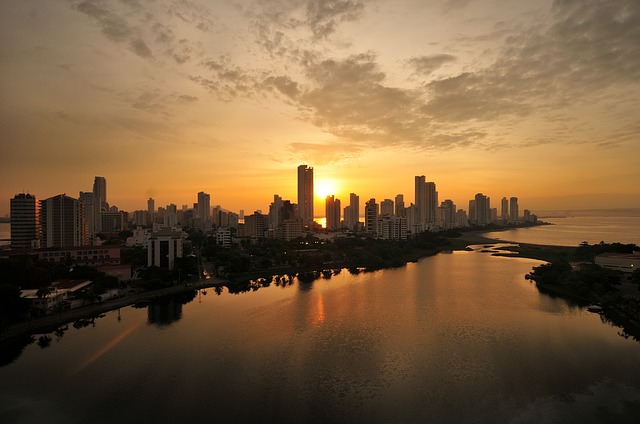
Backpacking in Colombia -The Lagito
Adventure in Colombia
Such a geographically diverse country also has a lot to offer the adventurous heart. Whether water sports or Andean mountain sports, whether volcano ascents or jungle trips, every wish will be fulfilled. You will experience a special adventure in combination with a special culture in the coffee triangle. Colombia is famous for its coffee beans, which find the ideal conditions on the altitude and the climate. By the way, the region belongs to the world cultural heritage.
There is even a real national park, the so-called Parque Nacional del Café in the municipality of Montenegro, which you can discover. Make a detour to the Valle de Cocora, which is part of the Parque Nacional Natural Los Nevados. Only there you will find the endangered palm tree palma de cera del Quindío, which is at the same time a national tree in a fascinating mountain ambience surrounded by clouds.
The hottest beaches in Colombia
There are Playas of every kind in Colombia. Fine sand, coarse grains, small stony bays or miles of white beaches – whatever you are looking for, you will find the beach of your dreams. There’s only a lot going on around the cities, otherwise you may not find any people on tens of kilometres. How could you, if you can walk 3000 kilometres of beaches in Colombia?
Beside the dream beaches on San Andres you will discover the beach region Juanchaco y Ladrilleros on the Pacific Ocean. There, four large rivers flow into the sea and form a unique ecosystem. At Playa Terquito, in the southwest of Nuquí, a waterfall plunges from the jungle to the beach at the 600 m long beach. You don’t see something like this every day. In the Bahía Solano in Choco you can watch the whales from June very close to the beaches. Great thing such a huge sea mammal so close.
Take a detour into the national park of Cocuy, where you can see the snow covered peaks of Pan de Azúcar, El Castillo and El púlpito del Diablo. In the park you will also discover different lagoons like the Laguna Los Verdes, Laguna Grande de la Sierra, Laguna La Plaza and the Laguna Avellanal. You can take a warm bath in the thermal baths of Guicán. Arrival is via Boyacá.
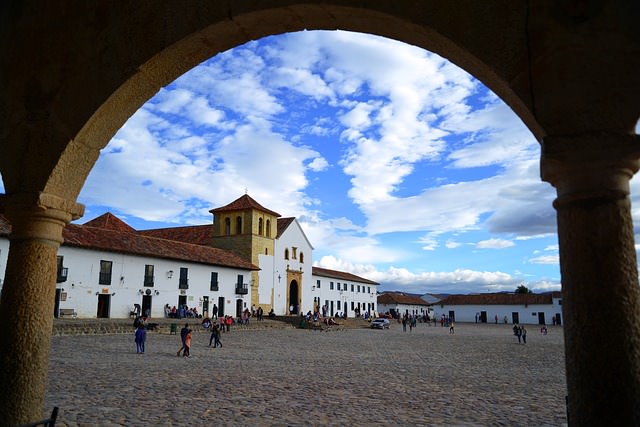
Backpacking in Colombia – Villa
Parque Nacional Natural Tayrona
The national park is situated by the sea. You will find several huts overlooking it. Coral banks, which are populated with a species-rich life and lonely beaches, can be found a row along the coast. There is also a nudist beach.
Flamingo Reserve Santuario de Fauna y Flora Los Flamencos
You can camp in the flamingo reserve Santuario de Fauna y Flora Los Flamencos. But also diving. There you will also get in contact with the indigenous people of the Wayú tribe. The journey takes place from Santa Marta to Riohacha.
The Desierto de La Tatacoa Desert
The Desierto de La Tatacoa is not exactly the driest desert in the country, La Guajira, but it is less crowded because it is less known. At the entrance an observatory awaits you, where you can see an amazing starry sky on the clear nights. Also fossils millions of years old can be found in the park.
Food and Drinks in Colombia
As you can easily imagine, due to the diverse geography that stretches from the highest peaks of the Andes to the Caribbean and Pacific beaches, including the Amazon jungle and vast steppes, there is a lot of different food available. These range from high altitude potatoes to exotic fruits from the jungle. Fish is also available. But also sometimes a tasty guinea pig is offered here and there. Those who want to try a plate with roasted ants have the opportunity to do so in Colombia. Every region and even some cities can have their own kitchen specialities.
The cuisine in Cartagena de Indias was once based on the roots of Spanish cuisine, which mixed with African cuisine. Today there is not too much left of it, because in the course of the last years in Cartagena as also in other regions an own kitchen formed. Delicious people who are not closed to the new will be able to delight their palates to the extreme. Whether Creole with Caribbean influences, Andin with indigenous tendencies or Asian or European delicacies, there are no limits to the variety.
Take a look around a market and enjoy the selection of fruits. How about fresh and cheap mangos, bananas, papayas, guayabas, lulos or maracuyá? The most delicious juices are made from all of them. Try a guandules or Sopa o sancocho de guandú con carne salada (Vegetables with salted meat.) On the Caribbean coast you will find stuffed carimañolas roasted on a yucca basis. Ajiaco santafereño, Asado santafereño or La Bandeja Paisa are other local delicacies that can be discovered depending on the region. In the Andes region around Tolima Grande, a kind of suckling pig is often served on special occasions. But that is called lechona there. White corn, no rice, and some local ingredients like natilla are served with the small roasted sow.
Drinks in Colombia
Coffee, cocoa and aguapanela are just some of the favourite drinks of the Colombians. In the Valle del Cauca you can also try Lulada, which is pressed from the fruit of the same name. Champus is also available. But the corn drink has little in common with the French noble drink. Canelazo is drunk warm. But the coffee-like drink contains schnapps. Of course there is also beer. Club Colombia, Aguila, Redd´s and Poker are just a few of the things you can pour in.
Backpacker Visa and Vaccinations in Colombia
According to the Federal Foreign Office, the following regulations apply when entering Colombia. Entry regulations for German citizens with valid travel documents.
Entry is possible for German citizens with the following documents:
- Passport: Yes
- Provisional passport: Yes
- Identity card: No
- Temporary identity card: No
- Children’s passport: Yes
Travel documents must be in good condition and valid for the duration of the planned stay. Upon entry, a return or onward flight ticket may be required.
Visa
As a German, you do not need a visa for a purely tourist stay in the country.
Vaccinations and medical advice
In any case, all standard vaccinations should have been carried out. A yellow fever vaccination is strongly recommended. Dengue and malaria are known in Colombia.
